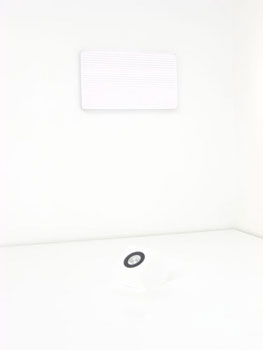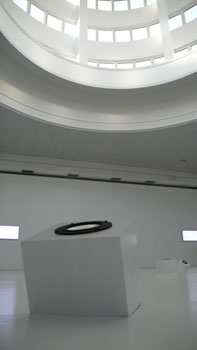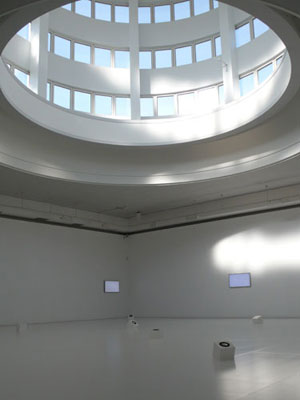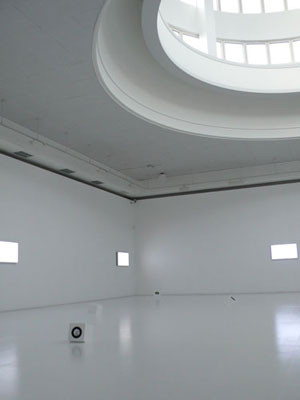|
In the autumn of 2007, a joint project by the Norwegian artist Kjell Bjørgeengen and the Belgian artist Aernoudt Jacobs will be shown in Bergen Art Museum’s Tower Room. A new, white floor will be laid over the old one, housing a partially sunken grid of sound speakers – some with a frequency so low that the sound will only be recognizable as the shaking of the floor, others with a high-frequency buzz. In addition to the sound, the exhibition will consist of nine large, rectangular flat screens, which, lacking frames and retaining their industrial look, will be divided among the three walls that face the viewer at the entrance to the room.
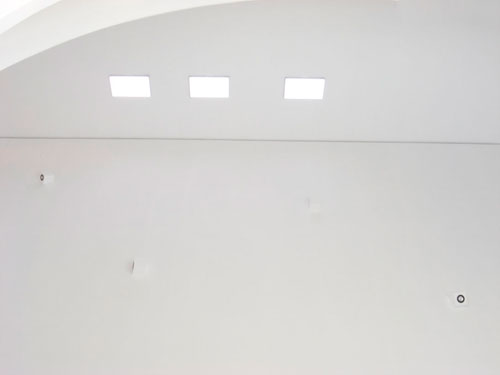
In the exhibition, the visual will no doubt seem less obtrusive than the audial. The visual elements originate from an oscillator synthesizer, which produces sound waves and then converts them into visual patterns. These patterns comprise the pictorial matter that is subsequently modified by Jacobs’ sound, each of which has a duration of 18 minutes. The sound from the speakers in the floor is first sent out into the exhibition space and then looped back, so that what we hear has already been colored by the architecture. In the exhibition itself, however, both the sound and images are replayed rather than live. The video imagery, in other words, doesn’t originate from a camera but from internally generated image processing in black and white, which renders varying visual results by means of a predetermined procedure. Although the 18 minutes of imagery has been selected from a larger amount of material, it is the procedure itself that determines what we see. At the same time, a large amount of labor has gone into finding the point at which an image is stable enough to tolerate being exposed to external disturbance.
The site-specific installation that Kjell Bjøgeengen and Aernoudt Jacobs have created together for the Tower Room is based on more concrete experiences of the room’s, or more accurately the rooms’, architectonic and acoustic qualities.
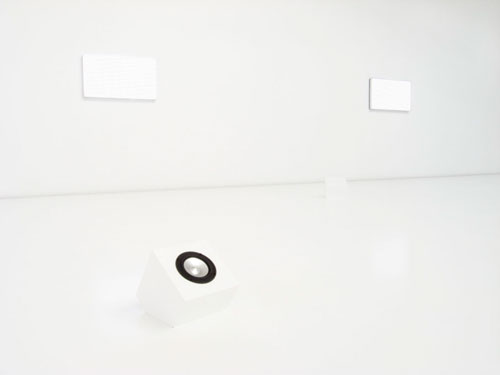
A fundamental observation is that the Tower Room does not in fact appear as one cohesive room but as conspicuously divided in two: the lower square section is more dimly lit and has a relatively low ceiling while simultaneously appearing to be compressed by the dominating volume of the brightly lit rotunda over it. This division created the basis for a dialectical artistic process in which the sound artist Jacobs comments on the room’s acoustic division, on the one hand, while Bjørgeengen counteracts it visually on the other. A fundamental tactic, in a literal sense, is the raised white floor which contributes considerably to consolidating the Tower Room into a whole unit. The displaced relationship between the mounting of the lcd-screens and the room’s symmetry contributes as well to moderating the tower’s visual dominance and creating a more balanced relationship between the two volumes of space. Thirteen integrated speaker-boxes activate the lower cube by directing sound at various angles and in various directions. While moving around the room you enter into different sound zones that are created by sound being reflected against the walls and ceiling. The architecture of the Tower Room has otherwise contributed to the production process in that a large portion of the preparation work with sound sketches, including sound recordings, have taken place in situ. The characteristic acoustics of the Tower Room was a decisive factor when Bjørgeengen, who was first contacted by the museum, proposed to include Aernoudt Jacobs in the project. The choice of collaborator can be explained by the fact that Jacobs, who studied architecture, has a special interest in the physical and spatial possibilities of expression of sound, or to put it another way, because he has “a well-developed ear for architecture”. Every room reflects sound differently and by re-recording the sound on site, the acoustics of the Tower Room’s has become an integrated part of the composition. The sound sketches underlying the work are based on recordings of the wind blowing in evergreen trees, the screeching of taxi car brakes, a melting clump of ice and the sound made by crickets to name just a few. In this fragmented and multilayered soundscape Jacobs alternates between a macro and a micro level that includes both an accentuation of minute details and a levelling out into diffuse noise.
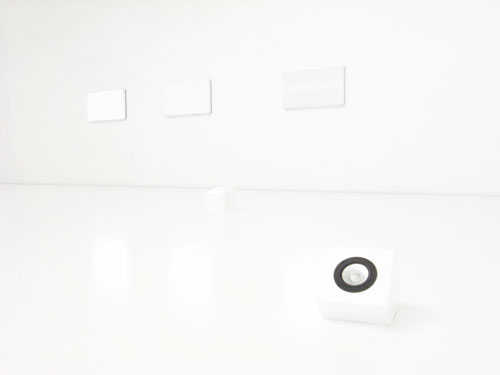
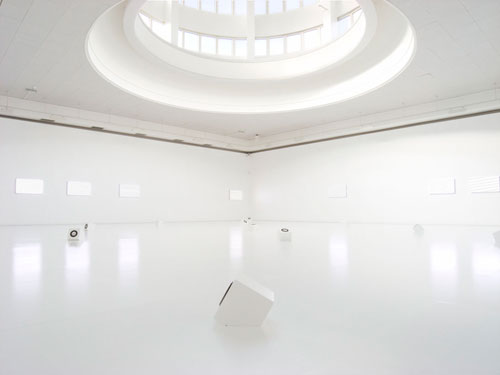
One’s first impulse is to characterise the screen images as abstract but that would be a mistake. They are quite the opposite; concrete visual representations of sound akin to the Flicker works that Bjørgeengen has been working with since the beginning of the 2000s. In this installation the images are partly connected to Jacobs’ sound composition so that variations in the sound picture are periodically reflected in
the video image. The work in its entirely can be regarded as a complex system in which some of the elements infiltrate each other, while others draw in opposite directions and thereby create meaningful intertices. The composition, which is coloured by the architecture, is coupled with a reluctance to acquiesce to the demands of definition that the architecture insists upon.
In this sense the sound-track in the Tower Room is a completed séance with repeated playings of 18 minutes duration, but it is perhaps coloured by the fact that large portions of the production were done during relatively concentrated sessions in Bergen, where everything was tested and realised collectively.
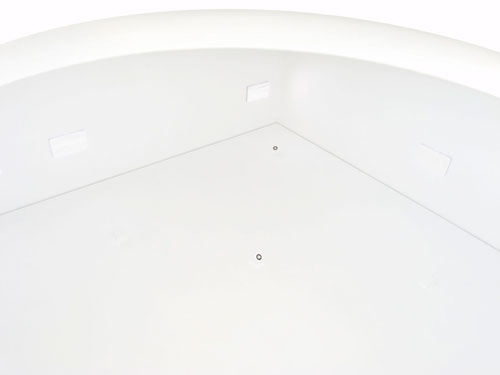
In the collective project with Aernoudt Jacobs in the Tower Room the sound control is not limited to driving specific parameters in the production of the imagery: the sound is in fact the most prominent element of the exhibition, while the visual element keeps somewhat in the background – though without subjugating itself to the tower’s demand for dominance. On the contrary, a new contact between high and low is established. The division of the room is accepted while simultaneously being annulled.
Texts by Frode Sandvik, Stian Grøgaard
|





